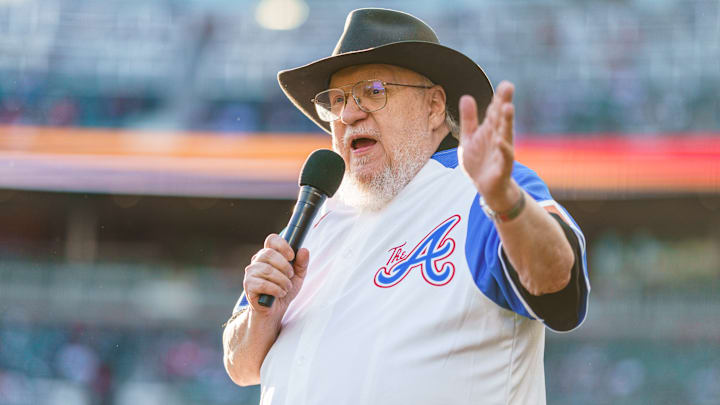George R.R. Martin is the author of A Song of Ice and Fire, which HBO adapted as Game of Thrones. Both the books and the show have some spectacular battle scenes, from the Battle of the Blackwater to the Battle of Castle Black to the Battle of the Bastards. Martin has been writing these sorts of scenes for decades and has perfected his method, which he talked about during a conversation with The Saxon Stories author Bernard Cornwell on the Bangcast.
To hear Martin tell it, there are a few different ways to depict a battle: you can do it from the point of view of a commander, who sits back and focuses on the strategy; or from the point of view of a common soldier in the scrum, who is just trying to survive. Martin has written battles from both perspectives. In fact, because his Song of Ice and Fire books are told from the points of view of many different characters, he can depict the same battle from multiple angles. He knows what he likes to see in a battle scene. He also knows what he doesn't like to see.
Later on the interview, Martin said that sometimes watching battle scenes in Hollywood movies will "piss me off." He held up the 1995 historical epic Braveheart as an example. "Braveheart is a good movie in some ways," Martin said. "But when they get to the Battle of Stirling Bridge, and it becomes the Battle of Stirling, and they leave out the bridge, which was central to the entire battle, and it's just a bunch of guys, two ends of the field running at each other, yelling and hacking; you're losing all sense of strategy or tactics or the battle and you're just doing it: "Okay, I'm gonna hit someone with the axe."
For an example of a battle scene he does like, Martin pointed to Cornwell's work in his Saxon Stories books, which revolve around medieval warlord Uhtred of Bebbanburg. "I think you do it in your Uhtred books and your Sharpe books; you get that visceral thing of, 'here comes a big redhead with an axe; he's gonna split my skull.' But you also have a real sense of what the tactics are and the strategies are and when you're winning and when you're losing...I don't know how you do that but it's pretty incredible."
Cornwell, who has been writing historical fiction for many years, returned the compliment. "Well, that's nice of you, George, cause I think you write better battle scenes than I do," he said. "But everything George says is right. I think one of the most important things is before you even begin the battle, you give the reader a sense of what the ground is like: where there are hills, where there are valleys, where there are rivers, so the reader has an understanding of what's going on. When I wrote my only nonfiction book, Waterloo, the very first chapter is set a year before Waterloo when the Duke of Wellington actually crossed the ground that would become the battlefield. And that meant I had a whole chapter to describe that field: the two hills, the valley between the road and the important buildings. So when you actually get into the more exciting stuff, which is the battle itself, the reader knows where they are. That's the general's point of view. As for the private or in Sharpe's case, the captain, it's: what can he see, smell, hear, feel? And it's those senses that take you through the battle."
This is interesting stuff for anyone who may want to try their hand at not only writing a battle scene, but staying on Martin's good side when they do it. Hopefully we can expect some great battle scenes when and if Martin ever gets around to releasing The Winds of Winter.
To stay up to date on everything fantasy, science fiction, and WiC, follow our all-encompassing Facebook page and sign up for our exclusive newsletter.
Get HBO, Starz, Showtime and MORE for FREE with a no-risk, 7-day free trial of Amazon Channels
